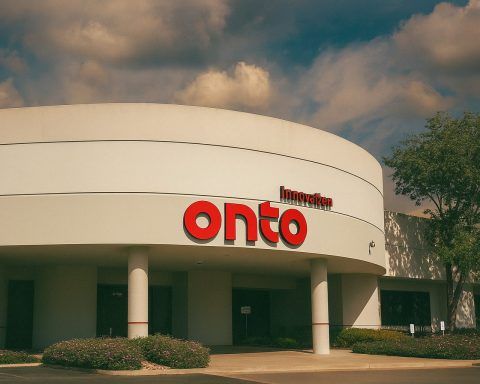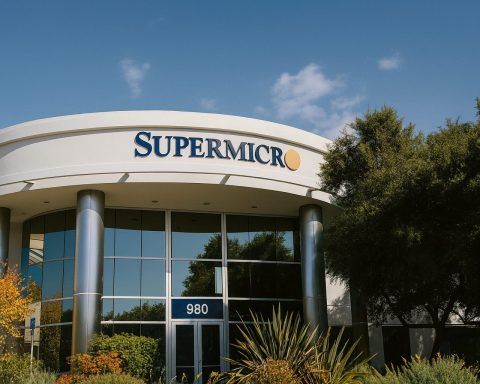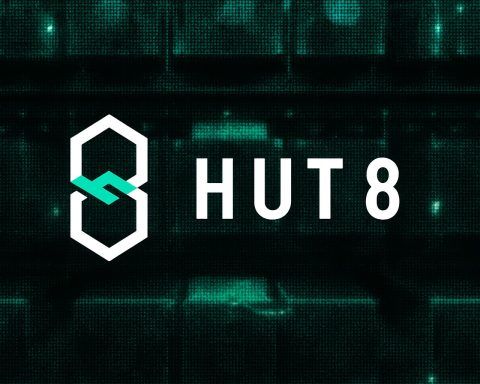Standard Chartered PLC (LON: STAN) spent Thursday trading near 1,580p in London, roughly 1.3% higher than Wednesday’s 1,560p close. Latest data show an intraday range between about 1,570p and 1,583.5p, on volume just over 700,000 shares, pointing to a solid rebound after a choppy start to the week. [1]
The move put Standard Chartered slightly ahead of the FTSE 100, which was up around 0.7% as global equity markets rallied on upbeat Nvidia earnings that helped calm fears of an “AI bubble”. [2]
Over the past 12 months, the Standard Chartered share price has climbed roughly 65%, pushing the stock towards the upper end of its 52‑week range of about 873p to 1,663.5p. At today’s levels, the emerging‑markets‑focused bank carries a market capitalisation of around £35–36 billion, with a trailing price-to-earnings (P/E) ratio just above 11x and a forward P/E below 9x. [3]
Standard Chartered share price today: key numbers (LON: STAN)
Based on the latest London trading data for 20 November 2025:
- Last price (approx.): 1,580.5p, up about +1.31% on the day
- Day range: roughly 1,570p – 1,583.5p
- Previous close: 1,560p [4]
- Market cap: around £35.5–35.9 billion
- Shares outstanding: roughly 2.28 billion [5]
- 52‑week range: ~872.8p (low) to 1,663.5p (high)
- 12‑month price change: about +65–66% [6]
- Valuation snapshot:
- Trailing P/E: ~11x
- Forward P/E (2025/2026 estimates): around 9–10x
- Price-to-book: just under 1x
- Dividend yield: roughly 2.0–2.3% (forecast rising slightly in 2026) [7]
- Risk & liquidity:
- Beta over five years: about 0.43, indicating lower volatility than the broader market
- Average 20‑day volume: around 4.4 million shares per day [8]
These metrics leave Standard Chartered positioned as a relatively low‑beta, high‑capital‑return bank stock within the FTSE 100, combining moderate dividend income with heavy buybacks.
Rebound after banking sell‑off earlier in the week
Today’s rise comes after a rocky start to the week for UK bank stocks. On Monday 17 November, the heavyweight banking sector fell around 0.8%, with Standard Chartered among lenders dropping between 0.7% and 1% as investors braced for key macroeconomic data. [9]
The pressure intensified on Tuesday 18 November, when London’s blue‑chip index slid about 1.3% in a global risk‑off move linked to fading hopes of a near‑term U.S. Federal Reserve rate cut. Bank shares led the declines, with Standard Chartered falling between 2.2% and 3.4%, according to Reuters, in its second straight session of losses. [10]
Price history from Investing.com shows STAN dropping from around 1,613p on 14 November to 1,560p on 19 November before today’s rebound to roughly 1,580.5p. [11] Thursday’s move therefore looks more like a recovery rallythan a fresh breakout, albeit one that keeps the uptrend from October’s strong results intact.
AI‑driven cost cuts: nearly 100 software apps retired
One of the most eye‑catching headlines linked to Standard Chartered today came from an interview with Chief Financial Officer Diego De Giorgi, who described how the bank is using artificial intelligence to streamline its technology stack.
According to coverage in The Edge (citing Bloomberg Television), Standard Chartered has: [12]
- Consolidated around 55 different systems used to track IT incidents into a single platform
- Built a “super app” that replaces roughly 40 separate internal applications handling areas such as pensions and employment contracts
- Folded these initiatives into its “Fit for Growth” efficiency programme, now in the second year of a three‑year delivery phase
The CFO suggested AI is transforming how finance teams work — shifting from poring over spreadsheets to “talking” to their data through more automated, intelligent tools. CEO Bill Winters has also emphasised that AI is already changing how the bank monitors large transaction volumes for financial crime and risk. [13]
For shareholders, this matters because it supports the cost‑control narrative underpinning the share price. Standard Chartered has already signalled that cost savings and higher‑margin fee income are helping it meet profitability targets faster than originally expected, as seen in its Q3 results where pretax profit rose 3% year on year to about $1.77 billion, beating estimates. [14]
Wealth push: new VIP private banking centre in Seoul
Today also brought fresh evidence of Standard Chartered’s wealth‑management expansion in Asia, a key pillar of its growth strategy.
In South Korea, Standard Chartered Bank Korea (SCBK) has opened the Apgujeong Priority Private Centre in an affluent Seoul neighbourhood, targeting VIP clients with at least 1 billion won (around $680,000) in assets. [15]
Key details from Korean media reports include: [16]
- The Apgujeong site is Standard Chartered’s 16th “priority private” centre globally
- The centre spans six floors, with a premium lounge, reception area, 11 client consulting rooms and a private vault
- It is staffed by 22 experienced relationship managers plus specialists in investments, FX and insurance
- SCBK plans to open additional centres in regions with high concentrations of affluent clients, including Busan and the wider Seoul metropolitan area
Executives quoted in local coverage framed Korea as a “key contributor” to the bank’s affluent‑client strategy and global wealth ambitions. The move reinforces Standard Chartered’s position as the only international bank with retail banking operations in Korea, deepening its foothold in a fast‑growing Asian wealth market. [17]
For the share price, this is consistent with the story that helped lift the stock after Q3: wealth management income jumped 27% in the quarter, and management has signalled it now expects full‑year income growth at the top end of its 5–7% guidance range, bringing its target 13% return on tangible equity forward to 2025. [18]
Leadership and hiring moves in China and Kenya
Standard Chartered also reported people moves today that highlight its focus on governance and regional growth:
- In Asia, Citywire Asia reports that Standard Chartered Private Bank has hired a mainland China team lead from Bank of China (Hong Kong) Private Banking. The move strengthens its capability to serve high‑net‑worth Chinese clients — a critical segment given the bank’s heavy Asian weighting and its ongoing push in cross‑border wealth. [19]
- In Africa, Standard Chartered Bank Kenya announced the appointment of Peter Gitau as a Non‑Executive Director and Kinya Kimatho as an Independent Non‑Executive Director, subject to regulatory approval. Both bring decades of experience in banking, technology, audit, strategic finance and governance, and are expected to support digital transformation and risk management on the Kenyan board. [20]
These moves may not move the share price on their own, but they reinforce the governance and talent story behind the stock, especially in core markets like China and Africa where Standard Chartered sees long‑term opportunity.
Aggressive share buybacks support the stock
If the wealth and AI stories explain Standard Chartered’s earnings momentum, the share buyback programme explains much of the technical support under the share price.
A regulatory announcement dated 20 November 2025 confirms that on 19 November the bank repurchased 486,765 ordinary shares at a volume‑weighted average price of about 1,558.43p, with trades executed on the London Stock Exchange and Cboe venues in a price range of roughly 1,539p to 1,570.5p. [21]
After cancelling these shares, Standard Chartered will have about 2.277 billion shares in issue, and the group notes that it has already spent roughly US$737 million on repurchases under the buyback announced in July 2025. [22]
Earlier in the week, a separate RNS (18 November) showed the bank buying back 471,184 shares at an average price near 1,599p for a cash outlay of about US$718 million cumulatively at that point. [23] Stock‑level statistics indicate that the share count has fallen by roughly 8% year on year, implying a buyback yield above 8% and lifting total shareholder yield (dividends plus buybacks) into double‑digit territory. [24]
For investors tracking Standard Chartered’s share price today, this continued shrink in the equity base is an important pillar of support. Even modest profit growth can translate into faster earnings per share growth when combined with sizeable buybacks.
CEO Bill Winters’ China message underpins Asia growth story
Another piece of news dated 20 November 2025 came from Shanghai, where CEO Bill Winters gave a bullish readout on international appetite for Chinese assets and the renminbi (RMB).
Speaking to China Daily, Winters said international investors are increasingly confident in Chinese equities thanks to improved valuations and continued economic growth, and highlighted how Chinese technologies — from open‑source AI models to electric vehicles and clean energy — are globally competitive. [25]
He argued there is still “more room” for the A‑share market to rise, as equity valuations have lagged behind underlying fundamentals, and pointed to strong export data as evidence of China’s resilience. The CEO also stressed the importance of expanding the offshore RMB market, offering a broader suite of yuan‑denominated products to international investors and central banks, and noted Standard Chartered’s growing offshore China business and technology footprint in cities like Guangzhou and Tianjin. [26]
Given how heavily Standard Chartered’s profitability is tied to Asia and China‑related flows, this constructive message helps underpin the longer‑term growth narrative that investors are pricing into STAN’s elevated share price.
Pakistan trade‑finance facility extends EM reach
Though announced on 18 November, an IFC press release and local coverage picked up today highlight another strand of Standard Chartered’s emerging‑markets strategy.
Standard Chartered Bank Pakistan and the International Finance Corporation (IFC) have agreed a new US$400 million risk‑participation facility to support short‑term trade and working‑capital lines for large local corporates and exporters. The facility, which doubles an earlier US$200m programme from 2022, aims to boost foreign‑exchange inflows and support sustainable economic growth in Pakistan. [27]
While this is a subsidiary‑level initiative, it reinforces Standard Chartered’s positioning as a trade‑finance heavyweight across Asia and frontier markets, and feeds into the global narrative that has helped the share price rerate since late 2024.
Valuation and analyst view: is there still upside in STAN?
From a valuation standpoint, Standard Chartered shares today sit at: [28]
- Trailing P/E: about 11x
- Forward P/E (2025–26): roughly 9–10x
- Price-to-book: just under 1.0x
- Dividend yield (trailing): around 2%, with consensus expecting a slightly higher payout in 2026
- Buyback yield: over 8%, driving a total shareholder yield of around 10%
MarketScreener data show a consensus rating of “OUTPERFORM” from around 15 analysts, with an average 12‑month target price of about $21.1 for the New York–traded line, implying low‑single‑digit upside from current levels. [29] Meanwhile, Investing.com’s London‑based coverage cites an average target around 1,614p, roughly 2%above today’s price, with a mix of buy and sell ratings that nets out to a broadly neutral stance. [30]
German outlet finanzen.net notes that analysts expect full‑year 2025 earnings of around US$2.20 per share, and points to a scheduled Q4 2025 results release on 24 February 2026, which is likely to be the next major company‑specific catalyst for the stock. [31]
What could move the Standard Chartered share price next?
Looking beyond today’s session, several factors could influence where the Standard Chartered share price goes from here:
- Macro & rates
UK equities have been sensitive to shifts in interest‑rate expectations and budget policy headlines. This week’s earlier sell‑off in banks was tied in part to jitters around the Fed and UK inflation data; further surprises on those fronts could easily ripple through STAN. [32] - Execution on AI and cost savings
Investors will watch how quickly the bank converts its AI‑driven consolidation into sustainable operating‑expense savings, and whether it can maintain service quality and risk controls while retiring legacy systems. [33] - Wealth and Asia growth
Q3 results already showed 27% wealth‑income growth and strong momentum in fee‑based businesses. The new Seoul private‑banking hub, China wealth hires and Pakistan trade‑finance expansion all feed into this story — but markets will want to see that translated into continued double‑digit income growth in 2026. [34] - Capital returns
The current buyback programme is a major prop for earnings per share. Any change in regulatory capital requirements, stress‑test outcomes or management priorities that slows the pace of buybacks could alter the investment case. [35]
Bottom line
As of 20 November 2025, Standard Chartered’s share price is holding near multi‑year highs, trading around 1,580pafter a strong year of outperformance versus both the FTSE 100 and many global banking peers. The stock reflects a clear narrative:
- AI‑enabled efficiency and disciplined cost control
- A pivot to higher‑margin wealth and fee income across Asia
- Heavy buybacks and steady dividends boosting shareholder returns
Whether there is much more upside from here will depend on how convincingly the bank can deliver on those themes into 2026 while navigating global rate decisions, geopolitical risks and the health of key markets such as China and Pakistan. For now, though, today’s trading action suggests investors remain comfortable paying up for Standard Chartered’s emerging‑markets growth story.
This article is for information only and does not constitute investment advice or a recommendation to buy or sell any security.
References
1. www.investing.com, 2. www.investing.com, 3. stockanalysis.com, 4. www.investing.com, 5. stockanalysis.com, 6. www.investing.com, 7. stockanalysis.com, 8. stockanalysis.com, 9. www.reuters.com, 10. www.reuters.com, 11. www.investing.com, 12. theedgemalaysia.com, 13. theedgemalaysia.com, 14. www.reuters.com, 15. koreajoongangdaily.joins.com, 16. koreajoongangdaily.joins.com, 17. koreajoongangdaily.joins.com, 18. www.reuters.com, 19. citywire.com, 20. thekenyatimes.com, 21. www.tradingview.com, 22. www.tradingview.com, 23. www.sharesmagazine.co.uk, 24. stockanalysis.com, 25. www.chinadailyhk.com, 26. www.chinadailyhk.com, 27. www.ifc.org, 28. stockanalysis.com, 29. www.marketscreener.com, 30. www.investing.com, 31. www.finanzen.net, 32. www.reuters.com, 33. theedgemalaysia.com, 34. www.reuters.com, 35. www.tradingview.com








